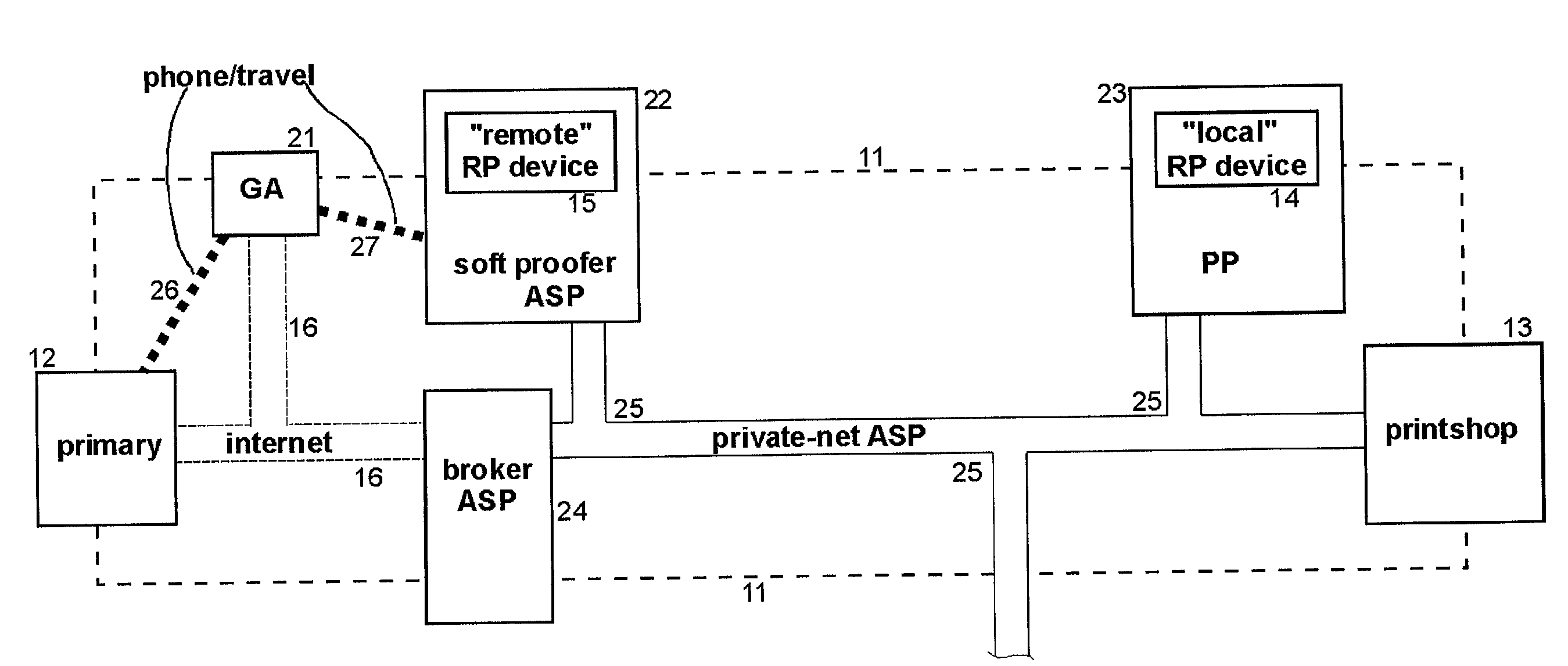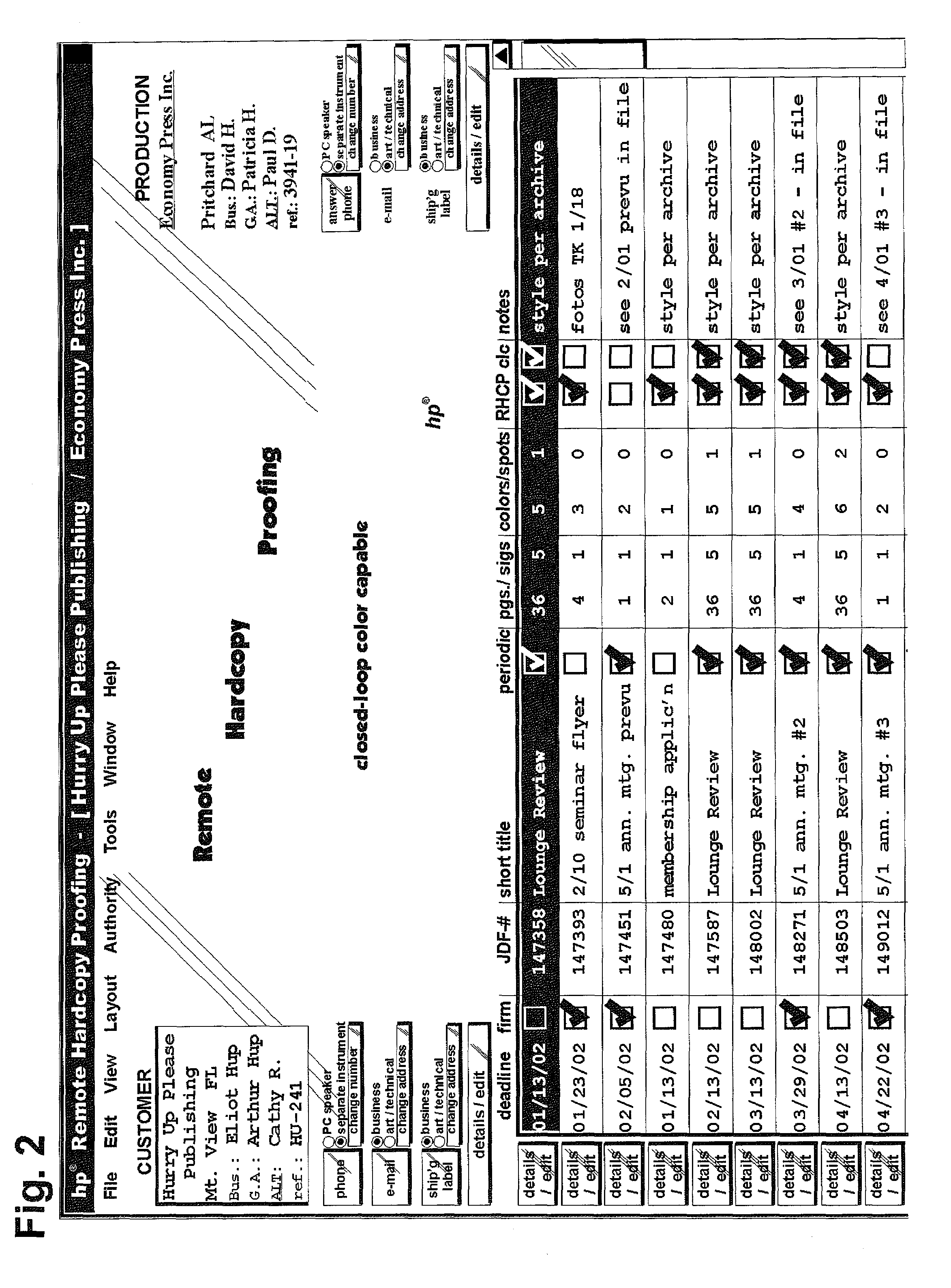Thus for purposes of the present document such
a site does not necessarily provide GUI interactions, or even full-screen DOS or
Unix data-reading and data-entry functions, although modernly a GUI format is extremely common and popular.
The guide, however, extracted a relatively sizable
toll (commission) for the guidance, which was a mixture of interpersonal skills with basic information about the industry.
At the same time, however, classically the viewing of hardcopy proofs itself generated very substantial costs—in travel by people whose time was expensive, and in
delay, and even in additional disagreements.
Printing out a PDF image on a computer printer is quite commonplace, but introduces myriad complications and still further sources of disagreement—and therefore many operators have focused on the far more straightforward process of showing proof on a
computer monitor.
In fact it is possible that the intrinsic differences are so obvious and striking that they actually defuse a large part of the complication that can arise in showing proofs.
It is also natural that many users have found
the Internet unsatisfactory for industrial purposes.
The medium was almost pristine in its academic
atmosphere as recently as fifteen years ago, but since its invasion by the Windows-driven general public
the Internet has now become susceptible to excessive congestion and dropped connections.
Particularly for relatively unsophisticated
computer users in small businesses,
the Internet is also now susceptible to massive proliferation of advertising, junk mail and other distractions from a businesslike procedure.
Fast lines (digital service lines or cable) are not available everywhere.
Nevertheless the phenomenon of vertical expansion among these ASP functions is surely driven in significant part by wariness.
Time, talent and even money devoted to cultivating a good customer can evaporate quickly and devastatingly in the maximally competitive, extremely volatile and minimally loyal printing industry.
One may question, however, the
overall efficiency and the primary-customer benefits of such integration.
This limited degree of copartnering may be seen as a significant problem in the printing industry.
Another deterrent, adding to the same problem in the industry, is a lack of full
interoperability between different service ASPs.
A certain degree of effort to build standards for linking various printing ASPs has been proposed in the trade, as for example in the PrintTalk Consortium, but this thrust has not been successful—at least not yet.
The reason for this is that diverse so-called “job models”—or “life cycles”, or “
workflow management” designs—are barriers to
interoperability.
For example, a remote-hardcopy-proofing ASP may not have a job model that supports closed-loop color proofing in which colors on the printing medium are objectively measured and checked.
These barriers are problematic.
In other cases such integrations may be essentially parasitic, a relatively benign form of commercial piracy—perhaps quietly overlooked by the host publisher when it appears that the incursion is beneficial to users and therefore garners additional profitable business for the host publisher.
Thus in the present context, though it is desirable to stimulate complementary ASP activities for the remote hardcopy-proofing art, it would be undesirable to do so by any mechanism that could facilitate piracy or like efforts to make off with the value of talented people and industrious enterprises.
(i) Conclusion—Accordingly, the prior art in the remote hardcopy-proofing field has failed to show the way to effectively integrating the efforts of complementary ASPs, particularly in ways healthy for competition and consumers.
This failing has continued to impede achievement of uniformly excellent remote proofing.
 Login to View More
Login to View More  Login to View More
Login to View More 


